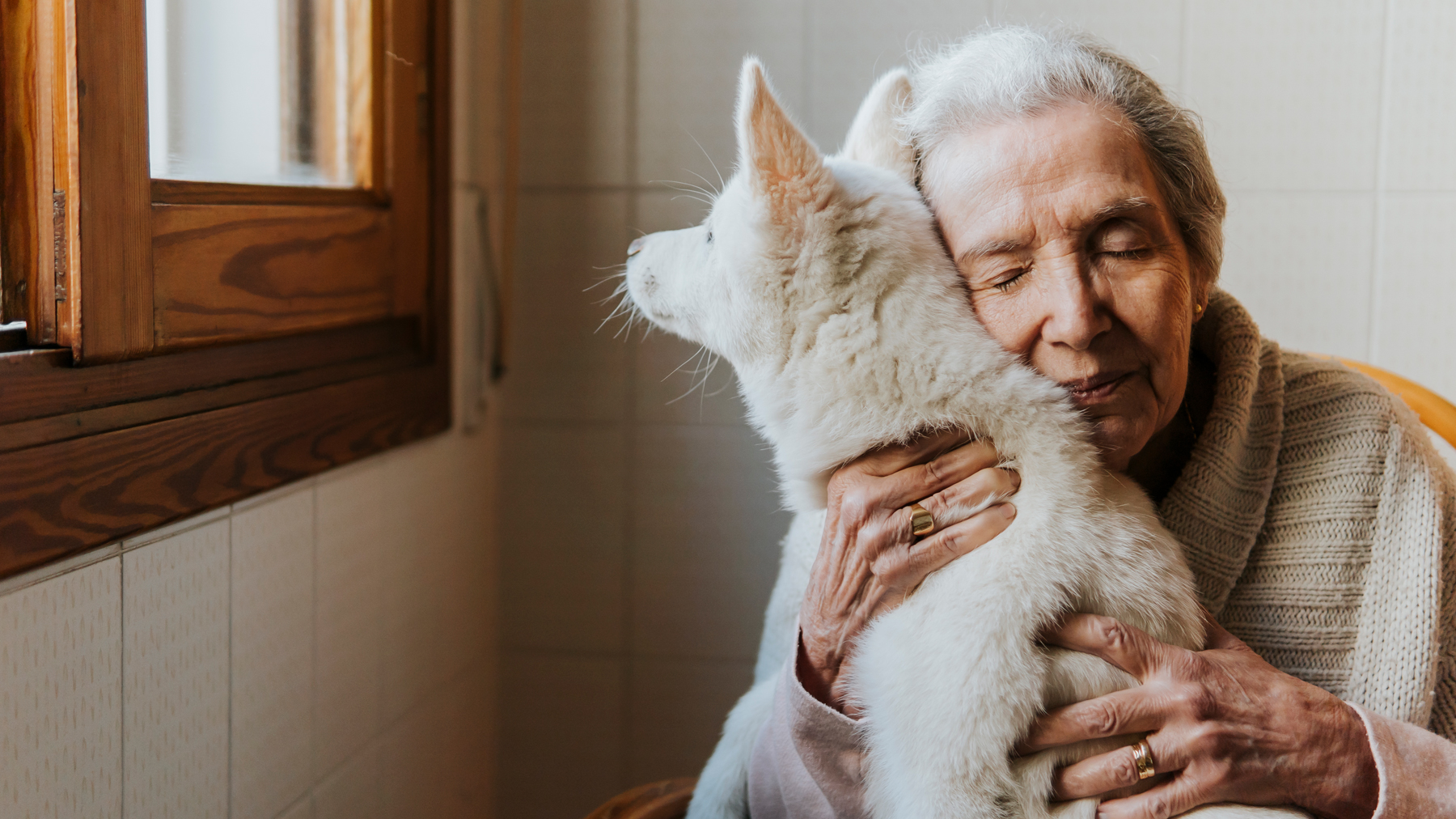
If your pooch is a bit of a Nervous Nellie, there’s plenty you can do to help manage his behavior. Even if your dog isn’t habitually anxious, any pet is capable of being nervous at some point. Some otherwise fearless pooches can’t stand thunderstorms, while others have a bit of a wobble and try to hide behind your legs at the sight of a truck.
You may instinctively want to make your pet feel better, but feel conflicted as to what’s the best way to help. You might have read or heard that comforting and cuddling dogs when they’re scared will only make things worse. The rationale here is that you’re reinforcing and validating the behavior, making your pooch indulge in it more.
According to Lyz Knight, though, a certified dog trainer who specializes in nervous and reactive dogs and runs Rover Rehab, this is a myth. Your dog can't help being scared, and won't try and act scared in the future just to get cuddles!
Knight, who posts as @roverrehabnj, recently shared some advice on comforting a nervous dog – whether it’s with treats, cuddles or distraction with some of the best puppy toys.
“Fear is an involuntary emotional response, and it can and should be met with support and comfort,” she explains. “Whether your dog's preferred type of comfort is pets, cuddles, talking to them, giving them treats or something else, offering it won't make them more afraid in the future.”
Instead, comforting your pet when he's scared calms him down and helps him to see you as safe and supportive. If a nervous dog knows he can come to you and feel safe, this can help contribute to a reduction in fearfulness over time.
A study carried out by the Department of Psychology of Wright State University in Ohio found that shelter dogs who were allowed to interact with a single human ‘attachment figure’ for 30 minutes a day were noticeably less fearful than those who received no such enrichment. Forming a strong bond with shelter staff helped the dogs to be calmer and less stressed.
Keen to know more? You might be interested in checking out our vet’s guide to the symptoms and treatment of anxiety in dogs.







